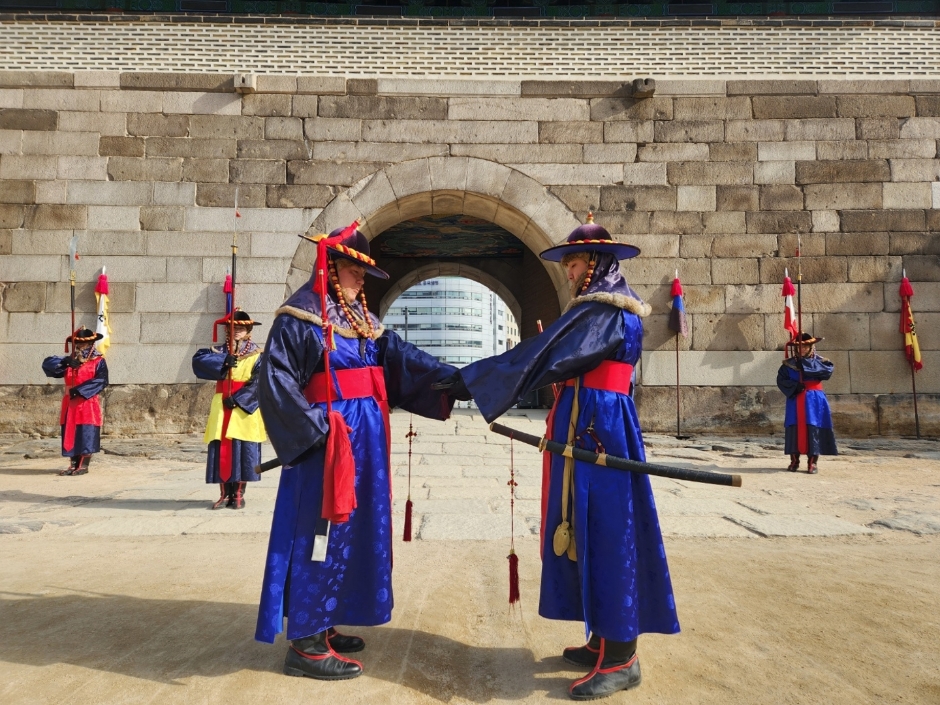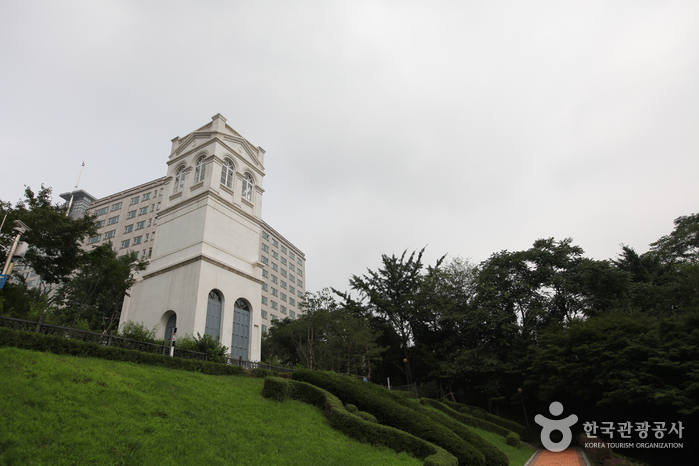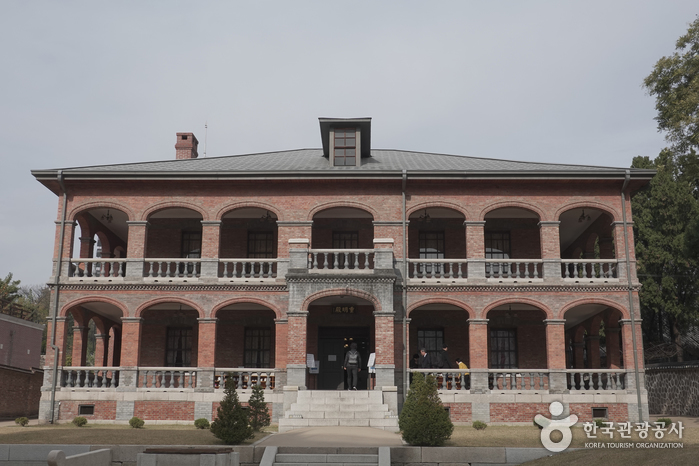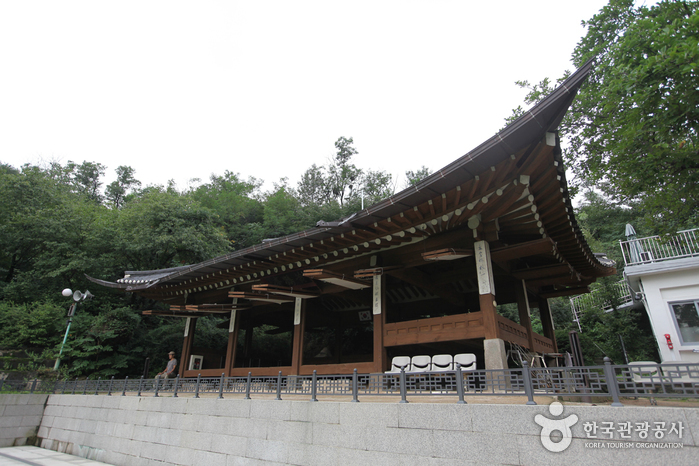Seoul Museum of Art (서울시립미술관(서소문본관))
4.9Km 2024-06-19
61 Deoksugung-gil, Jung-gu, Seoul
+82-2-2124-8800
The Seoul Museum of Art (SeMA) is a space for all to meet and experience the joy of art. Located in the center of Jeong-dong, a district that retains traces of Seoul’s modern and contemporary history, the museum integrates the historical facade of the former Supreme Court with modern architecture. In addition to various programs―encompassing exhibitions, educational outreach initiatives, screenings, workshops, performances, and talks, communal spaces including SeMA Cafe, the artbook store, the open space lobby, and the outdoor sculpture park SeMA WALK provide a rich range of ways for visitors to experience art.
Olive Young - Deungchon Branch [Tax Refund Shop] (올리브영 등촌)
4.9Km 2024-04-18
1F, 20, Mokdongjungangbuk-ro 7-gil, Yangcheon-gu, Seoul
-
Sungnyemun Gate Guard Ceremony & Experience (숭례문 파수의식 / 원데이! 파수군)
4.9Km 2024-03-12
40 Sejong-daero, Jung-gu, Seoul
010-2802-2133
The Sungnyemun Gate Guard Ceremony is a reenactment of the changing of the guards who protected the fortress walls around the capital city during the Joseon dynasty. During this change, the gates would be opened for the off-duty guards to go out and replace those finishing their shift of walking along the walls.
Jeongdong Theater (국립 정동극장)
4.9Km 2024-06-19
43 Jeongdong-gil, Jung-gu, Seoul
+82-2-751-1500
Jeongdong Theater is located along Deoksugung Stone Wall Path and serves as a cultural hub for local citizens. Opened in 1995, Jeongdong Theater is historically significant as it was established to restitute the legacy of Wongaksa, the first modern theater in Korea. Jeongdong Theater features numerous critically-acclaimed productions, such as “Traditional Art Performance,” “Masters Exhibition,” and “Art Frontier,” as well as programs like “Art Stage at Noon” that are geared toward the general public. As a result, Jeongdong Theater has become one of Korea's representative traditional arts performance theaters and was designated as a Seoul Future Heritage in 2015.
The theater successfully held the performance “Miso” in 2010, featuring the traditional musical "Love Songs from Chunhyang," written and created by Jeongdong Theater. The musical attracted many international visitors from all over the world, passing on Korean cultural values and beauty, as well as gaining the attention of critics worldwide. In addition, the theater also produced "The 2nd Story of Miso: Baebijang-jeon," offering a modern interpretation of the fundamental values found in Korea's culture and art.
Jinju Hoegwan (진주회관)
4.9Km 2024-06-19
26 Sejong-daero 11-gil, Jung-gu, Seoul
+82-2-753-5388
Jinju Hoegwan is a renowned kongguksu (noodles in cold soybean soup) eatery near City Hall Station. Kongguksu is a traditional Korean summer dish made by boiling and grinding soybeans into a creamy broth, served with noodles, offering a refreshing and nutty flavor. Kongguksu is available from March to November. Their staff-recommended menu includes kimchi bokkeumbap (kimchi fried rice), freshly roasted by the staff, along with kimchi jjigae and samgyeopsal (pork belly).
Olive Young - Hongje Station Branch [Tax Refund Shop] (올리브영 홍제역점)
4.9Km 2024-04-17
1F, and 2F, 446, Tongil-ro, Seodaemun-gu, Seoul
-
Seoul Former Russian Legation (서울 구 러시아공사관)
4.9Km 2020-06-18
21-18, Jeongdong-gil, Jung-gu, Seoul
+82-2-3396-5882
The Russian Legation was built in a Renaissance style in 1890. Russian architect, A. J. Scredin Sabatine designed the structure. In 1895, during the Joseon dynasty, the Eulmisabyeon Incident took place as a show of force by the Japanese.
Empress Myeongseong-hwanghu was emerging as a strong figure in Korea at a time when a power struggle between Japan, China, Russia, and other powers were taking place. Japanese Minister, Miura Goro saw her as a threat and ordered her assassination. After hearing news of the Empress’s assassination, King Gojong and the Crown Prince sought refuge in the Russian Embassy for one year.
After 1945, the Soviet Union took over the embassy until it was almost completely destroyed by a fire during the Korean War [1950~1953]. The only remaining parts of the building are the tower and basement areas. The building was restored to its current condition in 1973 and is now enjoyed by many as a public park.
Jungmyeongjeon Hall (중명전)
4.9Km 2025-01-09
41-11, Jeongdong-gil, Jung-gu, Seoul
+82-2-752-7525
Located near Deoksugung Palace, Jungmyeongjeon Hall is a red-brick modern Western-style building. It was built in 1899 as the imperial library of the Korean Empire. After Deoksugung Palace caught on fire in 1904, the place became the temporary residence of Emperor Gojong. It also witnessed the tragic part of history in which the infamous Eulsa Treaty (Japan-Korea Protectorate Treaty), an illegal treaty forced by Japan, was signed in 1905. Its exhibition hall serves as a place for historical education.
Hwanghakjeong Pavilion (황학정)
4.9Km 2020-04-02
15-32, Sajik-ro 9-gil, Jongno-gu, Seoul
+82-2-738-5785
Hwanghakjeong Pavilion was built in 1898 by decree of King Gojong’s. It was originally set up close to the northern wall of Hoesangjeon in Gyeonghuigung Palace for archery practice. In 1922 when the Japanese colonial government sold buildings of Gyeonghuigung Palace to the public to build Gyeongseong Middle School in the location, the Hwanghakjeong Pavilion was bought and restored at the current location, which is an old site of Deunggwajeong Pavilion located to the North of Sajik Park.
It is relatively large for a pavilion, but the structure is plain and simple. There is a well behind the pavilion to the southwest. A rock behind the well has an engraved poem about eight beautiful scenes of Hwanghakjeong. Located to the right of the pavilion building (northeast of the building) is Hancheongak Pavilion, which has unique roof. To the west of the pavilion is Sauhoegwan Hall that was built with reinforced concrete.

![Olive Young - Deungchon Branch [Tax Refund Shop] (올리브영 등촌)](http://tong.visitkorea.or.kr/cms/resource/23/2880123_image2_1.jpg)

![Olive Young - Hongje Station Branch [Tax Refund Shop] (올리브영 홍제역점)](http://tong.visitkorea.or.kr/cms/resource/16/2888016_image2_1.jpg)



 English
English
 한국어
한국어 日本語
日本語 中文(简体)
中文(简体) Deutsch
Deutsch Français
Français Español
Español Русский
Русский